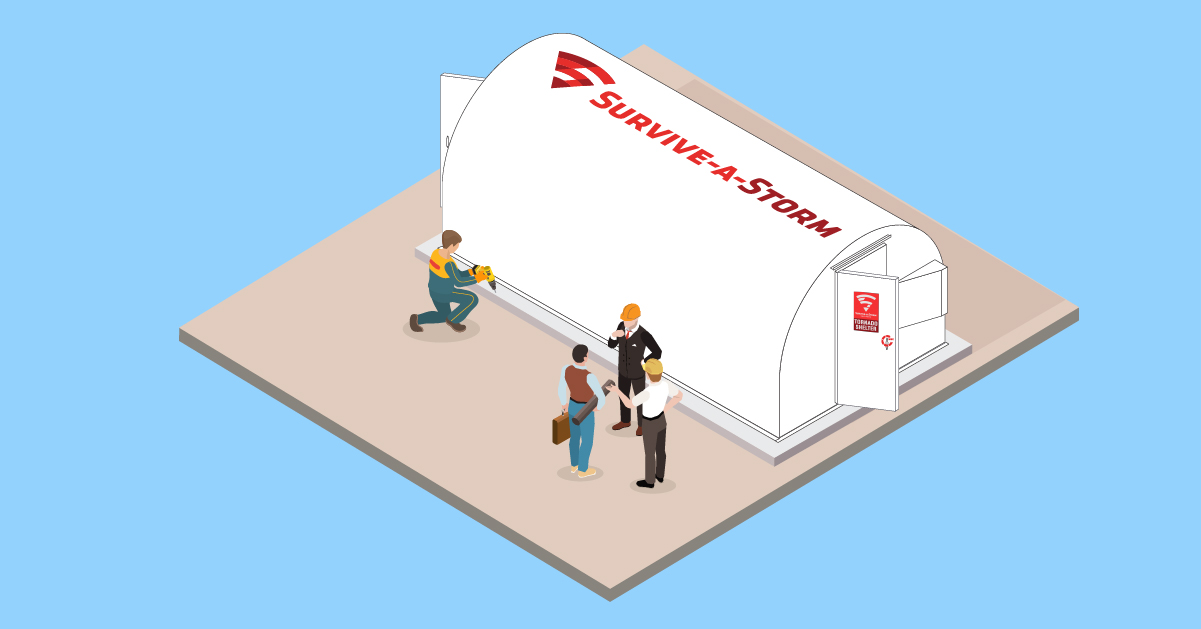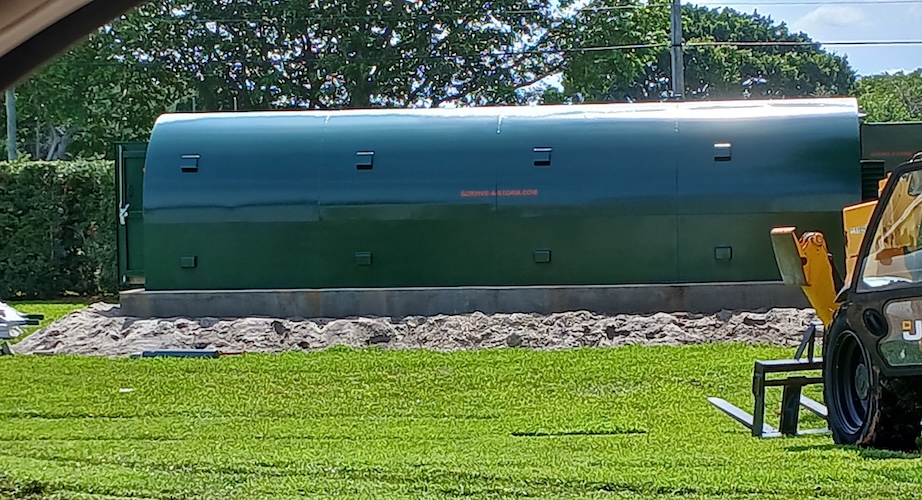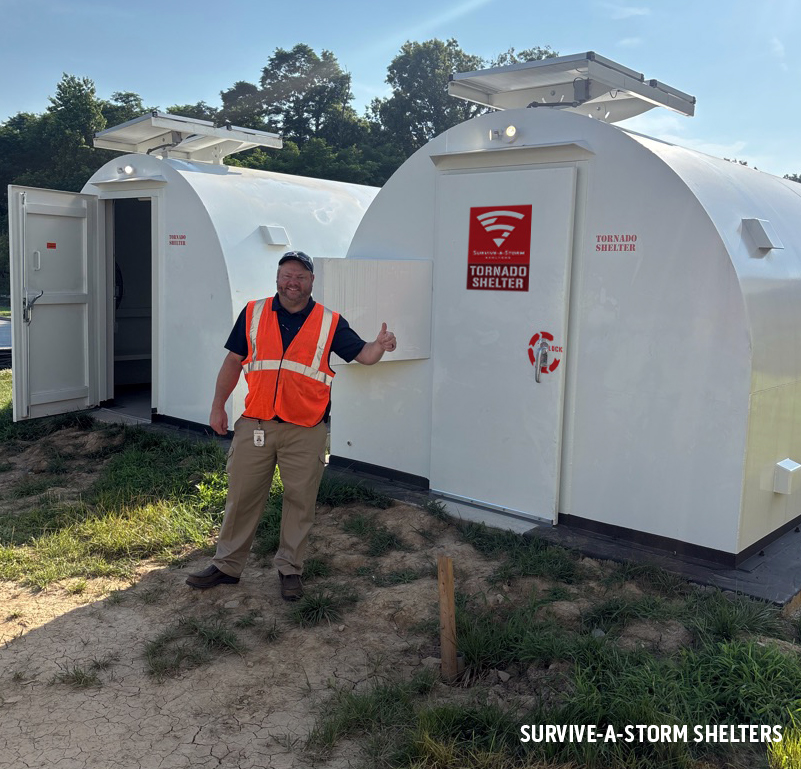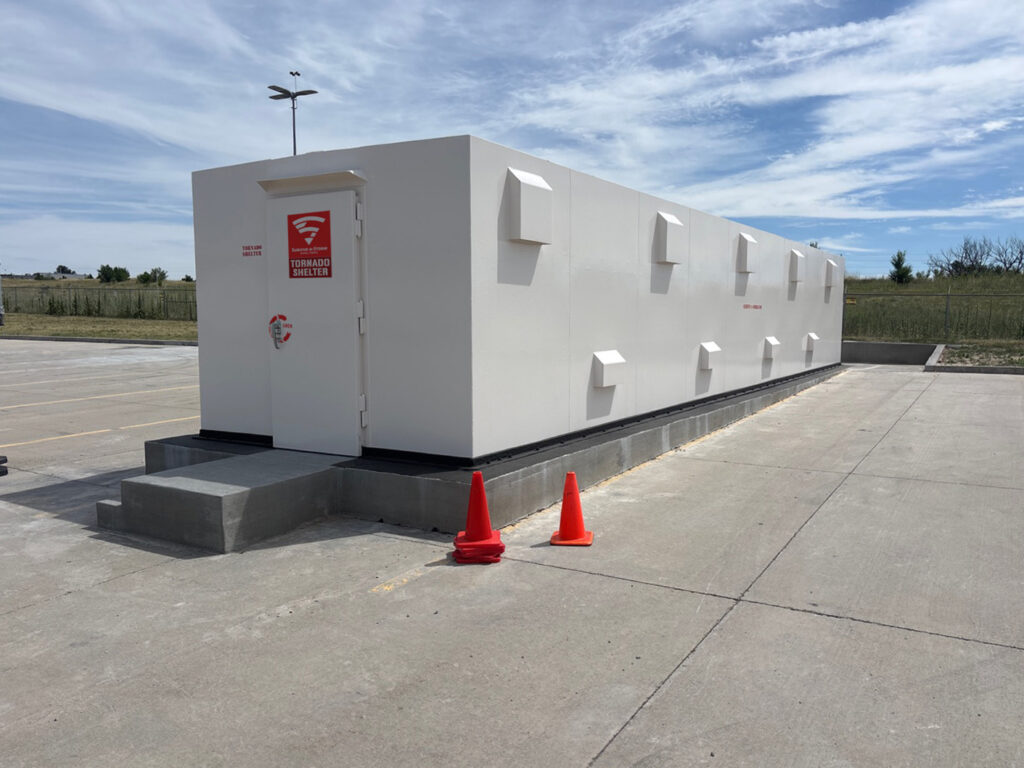CATEGORIES:
Are Community Storm Shelters Safe During EF5 Tornadoes?
August 15, 2025

What Civic Leaders Should Know About FEMA P-361 & ICC-500 Standards
EF5 tornadoes, with wind speeds exceeding 250 mph, are rare but devastating. As nature’s most violent storms, they represent a disproportionate share of tornado-related deaths and are capable of flattening entire neighborhoods. While no structure is fully tornado-proof, community storm shelters designed and installed to meet FEMA P-361 and ICC-500 standards can mean the difference between life and death. Here’s how civic leaders can ensure their communities are prepared for the worst.
Why Community Storm Shelters are Necessary During EF5 Tornadoes
EF5 tornadoes account for less than 1% of all tornadoes but cause over 30% of tornado-related fatalities. These storms can generate wind speeds of more than 250 mph. That's strong enough to:
- Destroy well-engineered buildings, leaving only foundations behind.
- Hurl vehicles over 300 feet, creating deadly debris.
- Debark trees and twist steel beams.
These extreme forces demand equally extreme safety measures, especially in areas where large groups of people gather. This protects families, employees and all occupants who rely on these shelters during tornadoes in Tornado Alley and beyond, meeting the critical safety needs of the community.
What Makes a Community Storm Shelter EF5-Rated? The Science of Survivability
Community storm shelters that meet FEMA P-361 and ICC-500 standards are designed to withstand the forces of an EF5 tornado. These standards specify engineering requirements for wind resistance, debris impact, occupant safety, security and durability against corrosion, ensuring that a EF5 tornado shelter can remain structurally sound during the most extreme conditions.

Key features include:
- Reinforced Concrete or Steel Walls: Thick, high-strength materials to resist penetration from debris and corrosion.
- Anchoring Systems: Securely bolted to reinforced concrete foundations to prevent uplift or displacement.
- Impact-Resistant Doors: Heavy-duty steel doors with multiple locking points.
- Ventilation Systems: Multiple protected vents with debris screens to maintain breathable air.
When built to these specifications and properly maintained, community storm shelters can offer critical protection during the most severe storms.
Common Weak Points in Community Shelters
Not all community storm shelters meet current FEMA and ICC standards. Common issues that reduce a shelter’s effectiveness include:
- Improper Anchoring: Weak bolts or foundations that are not reinforced.
- Outdated Designs: Tornado shelters that are built before 2015 may not meet ICC-500 standards.
- Ventilation Failures: Blocked or insufficient vents could restrict airflow during an emergency.
Regular inspections, maintenance and upgrades are essential to sure a shelter remains EF5-ready.
How to Verify Your Local Shelter’s Safety Rating
Community leaders can take practical steps to confirm a shelter meets FEMA P-361 and ICC-500 standards. Here's a checklist:
Review Compliance Documentation. Request engineering drawings or manufacturer specifications that reference FEMA and ICC design criteria.
- Inspect Anchoring Systems, Doors, and Security Features: Ensure all bolts, hinges, and locking mechanisms are intact, rust-free, and properly secured.
Test Ventilation and Lighting: Confirm that vents are unobstructed and that emergency lighting is operational.
Check Maintenance Logs: Look for consistent inspection records and any documented repairs or upgrades. (Have cracks or rust been noted?)
Taking these steps not only improves safety but also builds public trust in the community’s storm preparedness. That's good news for customers, workers, loved ones and other occupants who rely on these shelters.

Frequently Asked Questions About Community Storm Shelters:
- Q: Does a basement count as a storm shelter?
A: Only if reinforced with steel/concrete walls and an ICC-500-rated door. - Q: How much does an EF5-rated shelter cost?
A: The average price in a commercial storm shelter is around $1,500 per occupant.
Funding and Upgrading If Your Shelter Falls Short
If inspections reveal that a community storm shelter does not meet FEMA P-361 or ICC-500 standards, leaders have several options:
- Apply for FEMA Hazard Mitigation Grants: These programs can help fund new construction of a new EF5 tornado shelter or upgrades that bring shelters into compliance.
Plan Phased Upgrades: Prioritize structural reinforcements and door replacements first, followed by ventilation, interior improvements, and other convenience features for occupants.
- Build Community Partnerships: Work with schools, businesses, or local organizations to share costs and expand access to compliant shelters.
Upgrading shelters not only improves safety but can also increase community confidence and resilience in the face of extreme weather. These improvements ensure protection through hundreds of potential tornadoes over the shelter's lifespan. That's peace of mind for Mother Nature's most extreme winds.
Leading with Safety: Building Trust in Community Storm Shelters Through Transparent Planning
Communities that prioritize EF5-ready shelters and communicate openly about their safety measures foster greater public trust. Cities like Joplin, Missouri, and Moore, Oklahoma, have taken steps to rebuild stronger after devastating EF5 tornadoes. They've added more community storm shelters, strengthened building codes, and improved emergency communication.
Regular safety drills, clear signage, and public updates on safe room maintenance can also reassure residents that their leaders are prepared for the worst and committed to protecting lives.
Talk with a shelter expert today to learn how your community can meet or exceed FEMA P-361 and ICC-500 standards and be ready for the next storm.







